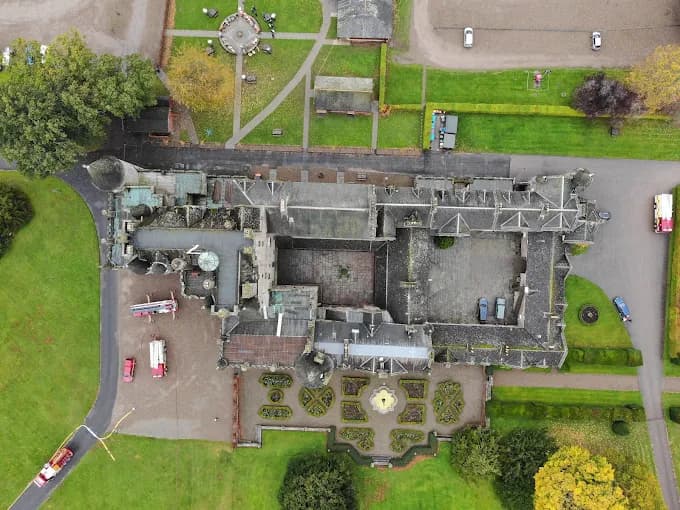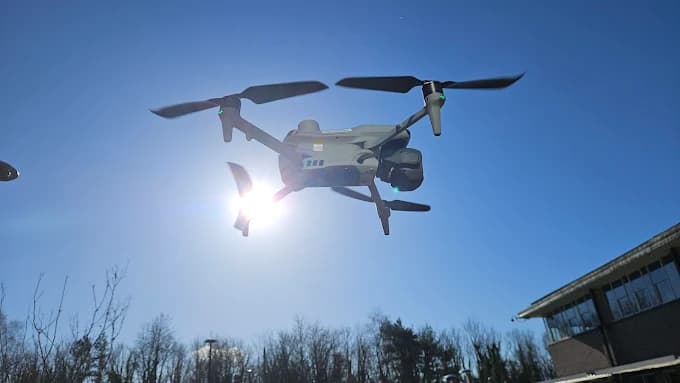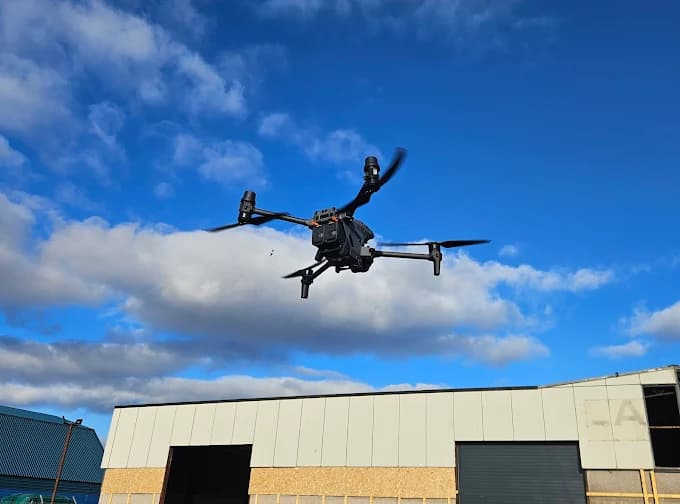
The truth is, you don't need a 'licence' for a sub-250g drone in the UK, but my GVC training reinforces one key point for new drone pilots: you almost certainly need an Operator ID if it has a camera.
This involves a £10.33 annual fee and displaying your unique number on the drone itself—a small detail that can lead to a hefty fine if overlooked.
Whether you're just unboxing your first DJI Mini for some holiday snaps or you're keeping an eye on future commercial drone work, this guide provides the professional insight to stay legal today and prepare for the major rule changes coming in 2026.

30 Second Summary
- No licence required for drones under 250g without a camera; registration and Flyer ID are optional but recommended.
- Drones under 250g with a camera require an Operator ID (£10.33 annually) displayed on the drone at all times.
- Flyer ID is highly recommended for all drone pilots, remains valid for five years, and covers essential safety knowledge.
- From January 2026, Flyer ID becomes mandatory for all drones weighing 100g or more, including sub-250g models.
- From 2026, Operator ID expands to drones 250g or more (£11.79 annually), with Remote ID capability also required.
Drones under 250g without a camera
If your drone weighs under 250 grams and doesn't have a camera, you're not legally required to register with the Civil Aviation Authority (CAA).
This means you won't need to obtain a Flyer ID or an Operator ID to fly your drone legally in the UK. You can operate your lightweight, camera-free drone without completing any formal registration process.
However, the CAA strongly recommends that you take the free Flyer ID test even though it's not mandatory for your situation. I always tell new drone pilots to do this anyway; it helps build good habits from day one and gets you thinking about the sky as a shared space.
This test will help you understand the rules and regulations for flying safely and legally. It covers essential information about airspace restrictions, safety guidelines, and best practices that'll make you a more responsible drone operator, protecting both yourself and others.
Drones under 250g with a camera
Adding a camera to your sub-250g drone changes your legal obligations significantly.
If your drone weighs under 250g and includes a camera—such as the DJI Mini 3 or Mini 4 Pro—you'll need to obtain an Operator ID.
This registration costs £10.33 annually and must be renewed each year. You can register for an Operator ID on the official CAA website. You're required to display this ID on your drone at all times.
My personal tip is to use a small, weather-resistant label from a label maker—it's much more durable than a paper sticker and ensures the number stays legible.
Whilst you don't legally need a Flyer ID for this category, it's highly recommended that you complete the free online course anyway. The Flyer ID remains valid for five years and provides essential knowledge about drone regulations and safe flying practices.
This education can help you avoid costly fines and ensures you're operating your camera-equipped drone responsibly within UK airspace.

Starting in 2026, nearly every recreational and professional drone weighing 100g or more will require both an Operator ID and Flyer ID, along with Remote ID capability by 2028.
If you're flying a drone in the UK, you'll face significant new requirements starting in 2026. These changes introduce stricter class markings and bring most recreational drones under a more formal regulatory framework.
Key changes include:
Flyer ID: Required for drones weighing 100g or more.
Operator ID: Expanded to cover drones weighing 250g or more.
Remote ID: Mandatory for most drones by 2028.
Flyer ID — Lower Weight Threshold
From 1 January 2026, the Flyer ID requirement will expand to include nearly every drone pilot in the UK. The current 250g threshold will drop to 100g, meaning you'll need a Flyer ID even for lightweight recreational drones like the DJI Mini 2 SE or Mini 4 Pro.
This change applies whether you fly professionally or as a hobby. You'll need to pass the online theory test to obtain your Flyer ID, which remains free of charge.
Once you've completed the test, your Flyer ID will be valid for five years before requiring renewal. From my perspective, this is a positive step. Even a tiny drone can cause a serious distraction or privacy concern, so ensuring every drone pilot knows the basic rules is common sense.
The lower threshold ensures that most drone operators—regardless of drone size—demonstrate basic aviation knowledge and safety understanding before taking to the skies.
Operator ID — Expanded to 250g Drones
You'll pay an annual fee of £11.79 for registration that remains valid for one year, and registration must be completed through the CAA's online portal.
My advice is to set a calendar reminder for this renewal a month before it expires; it's a small administrative task that's easy to forget. Your Operator ID covers all drones you own, so you won't need separate registrations for each drone.
However, you must display your ID number clearly on every drone. This expanded requirement means nearly all camera-equipped recreational drones now demand proper registration before you legally fly them.
Remote ID — Mandatory for Most Drones
Remote ID represents one of the most significant regulatory changes coming to UK drone pilots in 2026. From 1 January 2026, you must activate Remote ID on any UK1, UK2, or UK3 class drone you operate.
This technology broadcasts real-time information including your drone's ID, location, and operator details.
If you're flying a legacy drone (models sold before UK-class marking like the DJI Mini 2 or Air 2S) weighing 100g or more with a camera, you'll need to enable or retrofit Remote ID by 1 January 2028. This two-year grace period gives you time to comply.
While 'retrofitting' might sound intimidating, I expect manufacturers will offer simple, plug-in modules to make this an easy upgrade. Remote ID ensures accountability and transparency in UK airspace, allowing authorities to identify drones and their operators remotely for safety and security purposes.

New Class Marking System
The UK is introducing a new class marking system that fundamentally changes how drones are categorised and regulated. From 2026, drones will carry UK class marks ranging from UK0 to UK6—a domestic version of the EU's C-class system.
UK0 covers drones under 100g, while UK1 through UK6 apply to progressively larger or more capable models. Each class mark determines your operational privileges, including how close you can fly to people and what restrictions apply.
If you're currently flying an EU-marked drone (C0–C4), you can continue using it until December 2027, giving you time to transition. I think once we all get used to it, this system will make things much simpler.
You'll be able to look at the box of a new drone and know exactly what you're allowed to do with it. This classification system directly affects sub-250g drones. Most will fall under UK0, though their specific class marking determines which rules you must follow during flight operations.
Stay Compliant and Fly with Confidence
Navigating UK drone regulations can be complex, especially with significant changes on the horizon for 2026. While you don't need a formal 'licence' for a sub-250g drone, using one for any project requires strict adherence to the rules, including having the correct Operator ID and understanding airspace limitations.
The simplest way to ensure your project is fully compliant and professionally executed is to hire an expert.
HireDronePilot.uk solves this challenge directly. As the UK's premier managed marketplace, we specialize in connecting businesses with verified professional drone pilots for hire. Our network is composed of drone pilots with the right certifications, including the GVC, who are always current on CAA regulations.
We streamline drone services through a competitive bidding process, ensuring quality, compliance, and value for every aerial project across the United Kingdom.
Don't risk falling foul of changing regulations. Get the professional results you need without the compliance headaches by visiting https://hiredronepilot.uk/ to find a verified drone pilot for your project today.
About the Author

Written by
Peter Leslie
Peter Leslie is a CAA-approved commercial drone pilot with 10+ years experience and over 10,000 flight hours. He holds the GVC and A2 CofC drone licences with full CAA Operational Authorisation. Peter is a member of ARPAS-UK, the UK's non-profit trade association for the drone industry. He founded HireDronePilot to connect UK businesses with qualified, insured drone operators.
Looking for More Drone Work?
Join the UK's leading network of professional drone pilots and grow your business.
Open Access
Bid on any job - all jobs open to all pilots
Grow Revenue
Access high-value commercial projects
Stay Busy
Fill your schedule with regular work
Related Articles

Can I Charge a Drone Battery Overnight
It's a dangerous gamble to charge your drone battery overnight, and you need to understand the fiery risks involved.

Scotlands Drone Laws [2025 Update]
Flying a drone legally in Scotland in 2025 is less about the drone you own and more about diligent pre-flight planning—a lesson.

How Often You Should Get a Roof Inspection
Schedule professional roof inspections twice per year, with extra checks needed after severe storms or extreme weather events.
